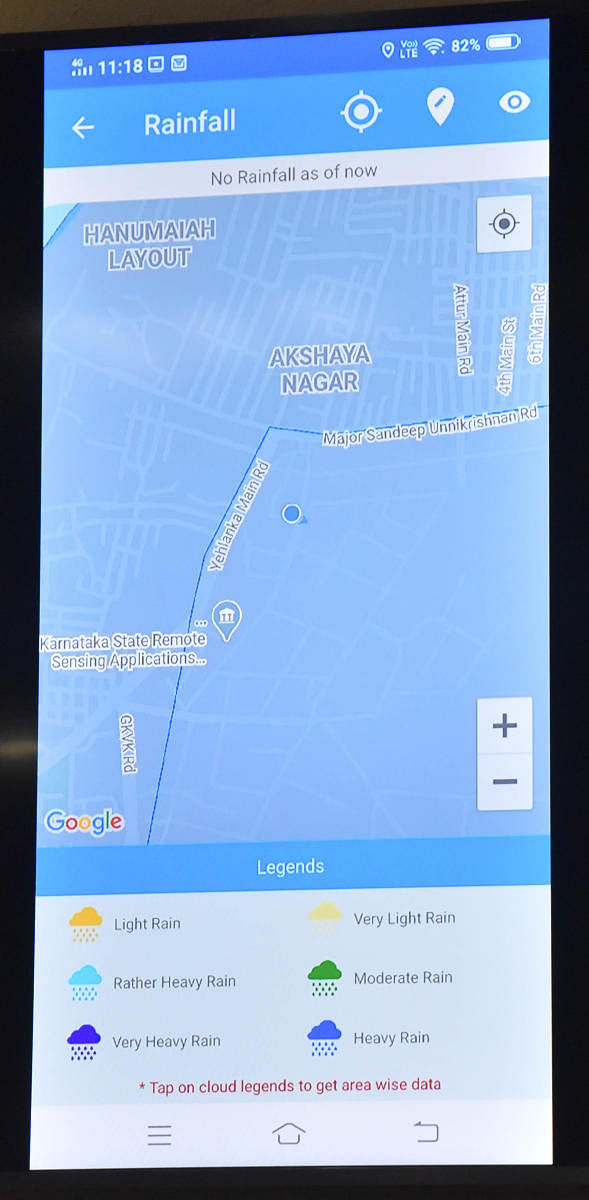
Want real-time updates on Bengaluru’s unpredictable weather, especially its sudden rains? The state government has launched a mobile phone app and a website that will alert the public to frequent changes in the weather.
The ‘Megha Sandesha’ app and the ‘Varuna Mitra’ website, jointly developed by the Karnataka State Natural Disaster Monitoring Centre (KSNDMC) and the Indian Institute of Science (IISc), were launched by Revenue Minister R Ashoka on Saturday.
The app has three categories — present weather, forecast and safety measures — and provides information on temperature, humidity, wind speed and direction, both in Kannada and English. The app also provides a three-day rain forecast. The app sources data from 100 telemetric rain gauges set up in 100 BBMP wards, with each covering a radius of seven square kilometres.
“These tools provide technology-driven solutions in addressing the urban flood phenomenon in Bengaluru. They use the hydrological model developed by IISc scientists to issue flood and inundation alerts as per the intensity of the rainfall,” Ashoka said.
BBMP Commissioner B H Anil Kumar said: “The extent of rainfall in Bengaluru has considerably increased of late. At the same time, the number of rainy days has reduced. Sometimes, Bengaluru has received a month’s rainfall on a single day, leading to flash floods. If people are provided with alerts and weather forecast, we can prevent losses.”
T K Anil Kumar, Principal Secretary, Karnataka State Disaster Management Authority, who was transferred in the evening, said the government would roll out a disaster management plan in a few weeks.
Dr G S Srinivasa Reddy, Director, KSNDMC, said urban floods posed a challenge to urban planners and meteorologists all over the world. “The fast-changing land-use pattern is the major cause of urban floods. This is also true of Bengaluru. The city is covered with so much concrete that there’s no way for rainwater to percolate down. This results in the excess run-off, causing floods,” he explained.